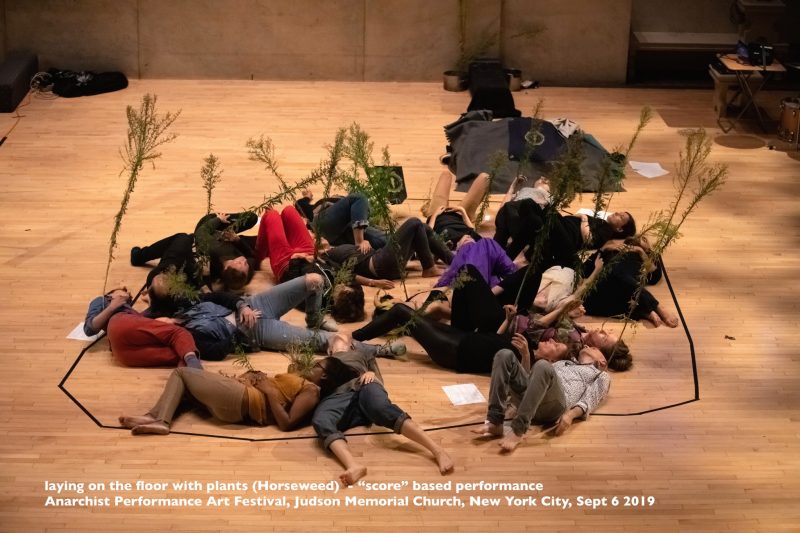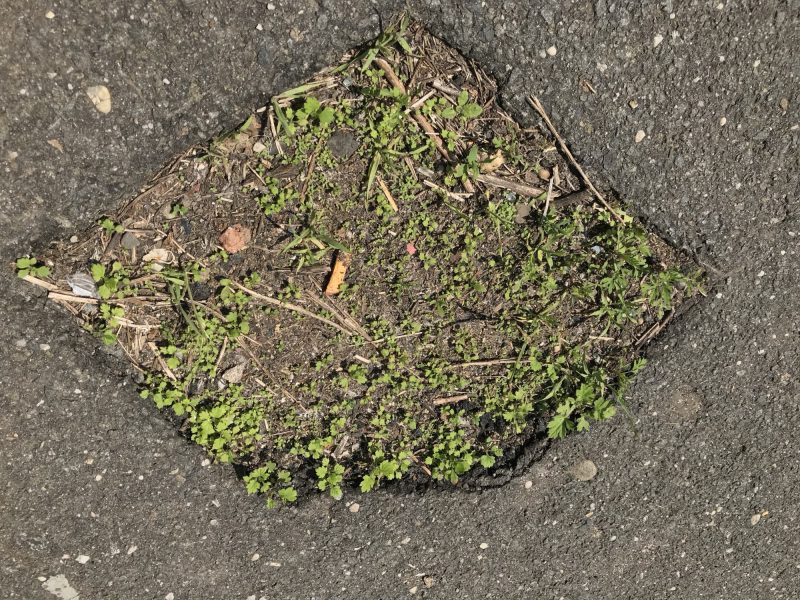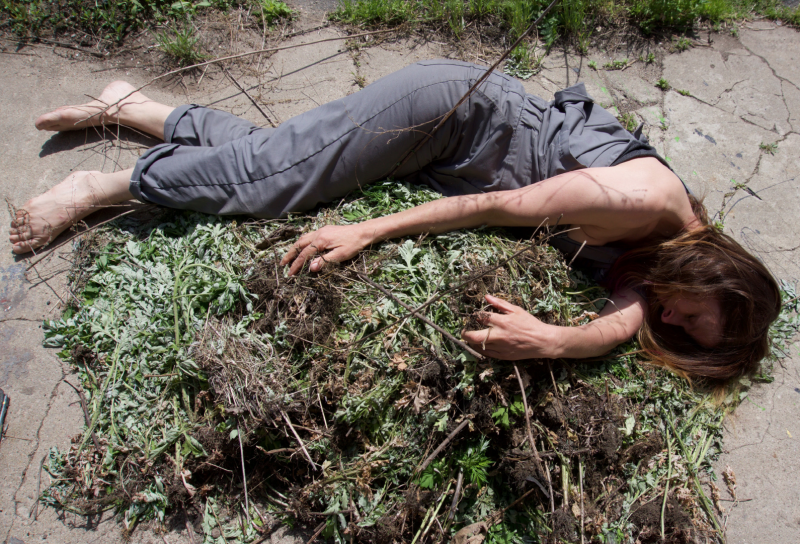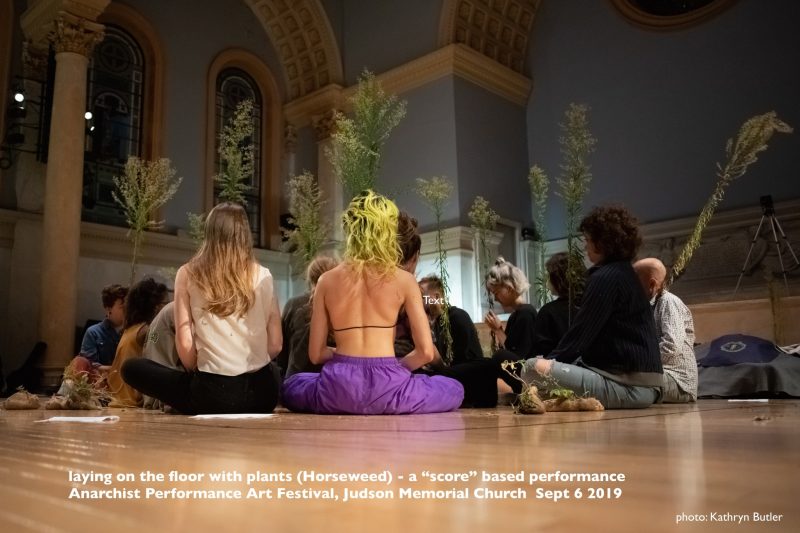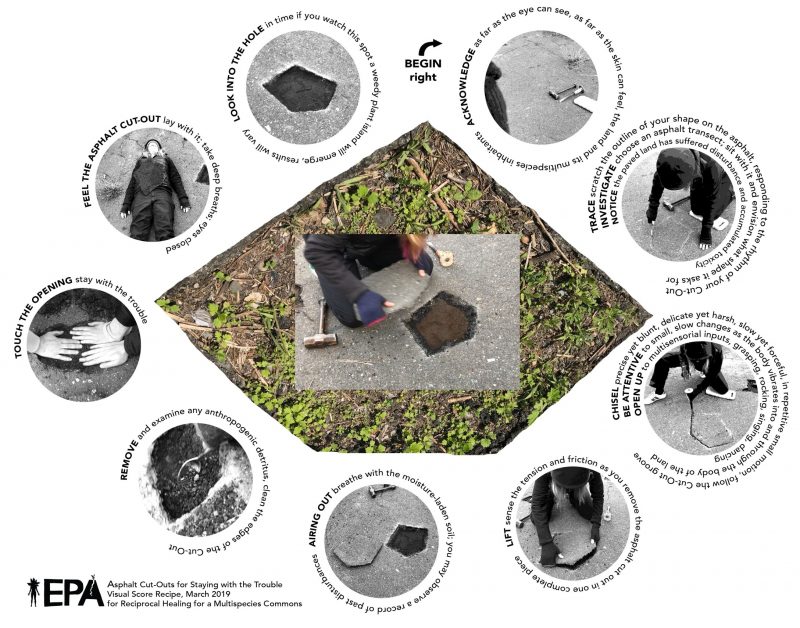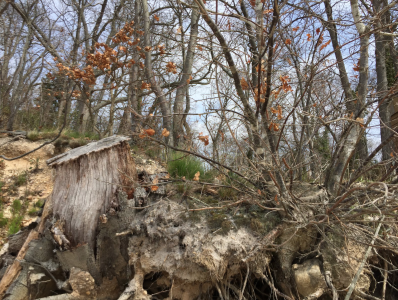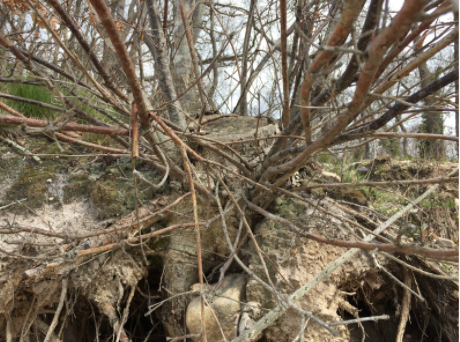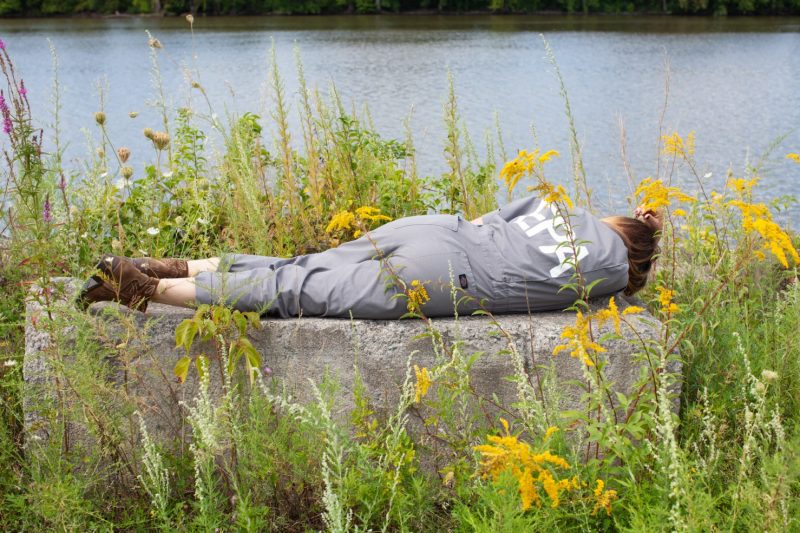
“It is sensational to be smelly – be hazy — be tasty – be dreamy – be blurry – be green – be silver –be juicy – be fragile – be resilient – be vulnerable – be loud – be unnoticed –be overwhelming –be everywhere – To affect – be affected – To have no self-expression- To need light – water – touch – wind – rain – microorganisms – It is sensational – To be fluid – changeable – unpredictable – invasive– persistent – resilient – sharp. It is sensational to be a rhizome. It is sensational that you make me a stranger in the street -> an immigrant -> an alien -> a healer -> a smuggler -> with no passport”
Community Organizer Artemisia Vulgaris (common mugwort)
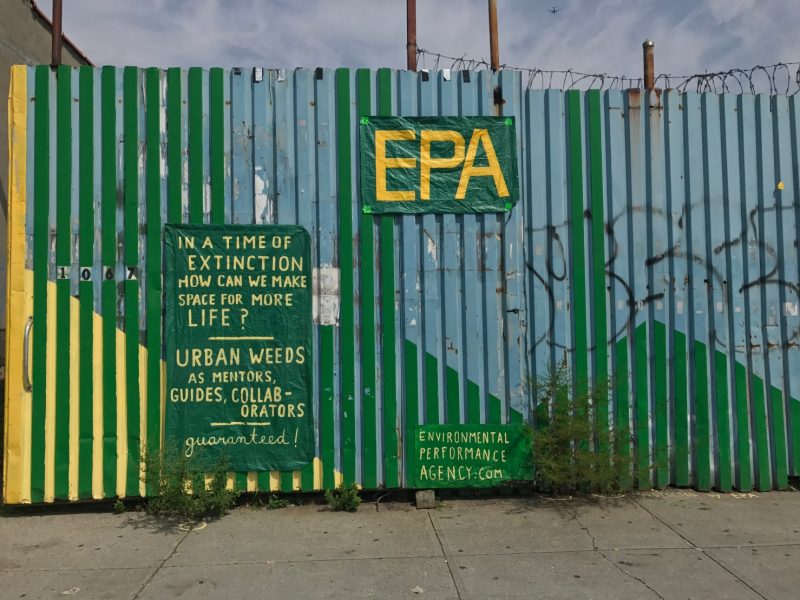
Founded as a response to the defunding of the US Environmental Protection Agency proposed by the Trump Administration in 2017, The EPA (Environmental Performance Agency) organized a nomadic, artist collective to respond site-specifically to urban ecologies in New York City and the wider New York region.
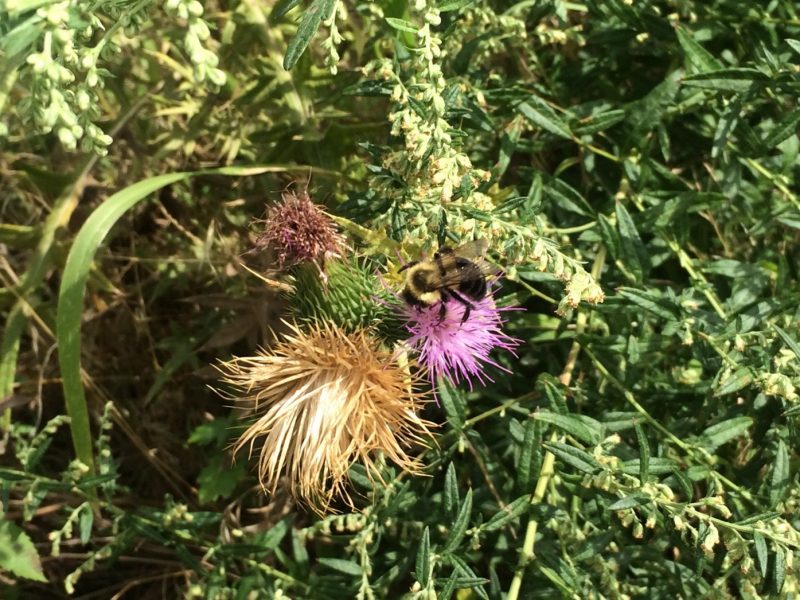
“Through artistic, social, and embodied practices, the EPA advocates for the agency of all living performers co-creating our environment, specifically through the lens of spontaneous urban plants, native or migrant.”
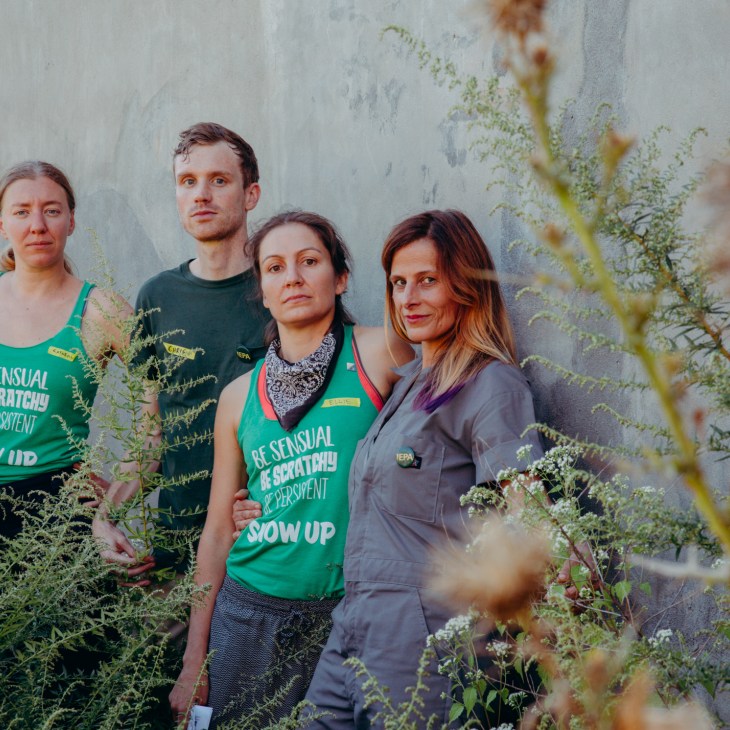
EPA Agents: Artemisia Vulgaris (common mugwort), Catherine Grau, Andrea Haenggi, Ellie Irons, and Christopher Kennedy
Conversations with Andrea
AF: Can you tell more about EPA’s community outreach and the participants that show up?
AH:
Our community outreach starts with the spontaneous plants in any community in which we are working. We are fascinated by the agency the plants have to respond to and shape the environment – and we consider them part of our community to start from.
What’s more, our fieldwork is designed to be participatory from the outset. When working in a particular field or environment, we wear what we call ‘EPA suits’ – grey coveralls with the initials EPA painted on them in large capital letters – and this automatically attracts public interest and conversations.
Further, we invite participants to join us in this public gesture. So, for a recent group show at NurtureArt (The Department of Human and Natural Services, 2019), we invited people who came to the gallery to “suit up” in order to perform plant clean ups (this involved donning an ‘EPA suit’ that was part of the wall exhibit in the gallery, going outside, and wiping layers of dust off spontaneous plants growing around a nearby concrete/cement plant), encouraging the public to claim environmental agency by playing with the performative element of becoming an EPA agent…
…At other times – when we are invited by environmental groups or academic institutions to lead workshops – the members of students at those institutions become our participatory audience… we pivoted to create an online participatory work called the Multispecies Care Survey – which uses action protocols to encourage individual participation and collects data by having participants send us their video and audio responses. We are currently refining the strategy of how to use the tools of the digital world to enhance participation.
Personally, I am interested in looking into the neighborhood-based mutual aid projects that have been developed during the pandemic times. I wonder what it might mean if we could get all the residents of a city block to do the Multispecies Care Survey – what kinds of connection this digital participation could build and whether any of these solo online “stories” could build action that would foster Multispecies Well-Being. I would like to try this in my neighborhood block.
SJ: Can you tell us about the EPA’s internal operations?
AH:
…we have been working together for three years and we started at a physical location – a former auto repair garage with a 1500 square foot vacant lot in Crown Heights, Brooklyn. Having a physical space to serve as a laboratory for action gave us the ability to understand each others’ sensibilities and to work with plants as our guides and mentors. We had to give up the space two years ago and this has changed our working process a bit. These days, rather than experimenting in the lab, we have to work more conceptually. Each of us comes with a different skills and approach…
now we have to have lengthy ZOOM talks to break through to the works we want to do.
AF: What are EPA’s ongoing practices or rituals for being entangled?
AH:
Each of us EPA agents has different ones. Mine is a daily practice where I create a multispecies encounters protocol and follow it. This is part of my movement artwork practice – which is located somewhere between public fieldwork and artistic studio effort.
As for the collective… If we are close to a project deadline, we will meet every week. The key is to always make sure the plants are present with us. If this is not given to us (we had a great residency at Wave Hill – a garden in the Bronx – this past winter), we create our own outdoor retreats where each of us facilitates some of their practice so we can find our practice as a collective. We do this every three months…
We try always when we get stuck to make sure our entanglement with the non-human gives us some grounding and let us know how to move forward.
In addition to my work with the EPA, I’m also working with urban moss as a teacher and collaborator and setting up different prompts to come closer to the teaching of moss and what moss’s teaching might mean for creating an artwork. I had previously been scheduled to do a live performance together with moss but now may need to pivot to a digital live- performance.
SJ: In what ways do you think that human-non-human, human-environment relationship will change over time/after the pandemic?
AH:
I think it has already changed people (human and non-humans). Birds flying much lower in the city street, taking their time-they adapted to the less cars in the streets. Plants have less dust on their leaves so the plant grow is may be more with their desire and less have to be stressed…
We all I hope are thinking seriously about what we value.
…I know that the pandemic has allowed me as well to understand, in real time, how much real estate development and auto/truck traffic has ruined the air in the city. How deep this will go will depend on whether we can find ways to really build on and continue the very diverse Mutual Aid groups that have sprung up and not letting the economy simply dictate the changes.
Yesterday, a large and popular restaurant closed for good in my neighborhood. Though they removed all their furnishings (the restaurant is planning to reopen in another part of town with less rent) they left the planters they had outside to be thrown away. I stopped by last night and rescued a white mulberry tree that had rooted in one of the pots. I will restore the tree to health and share it with my neighbors about the action so they can be aware of other changes and alert each other. This is part of how things can go from personal to communal and even in the end may can inform new city policies.
…We have to be much more intent on listening and building diversity.
Weedy Disruption
“Embodiment disrupts because we see new relationships and break patterns … it is a daily practice.”
Andrea
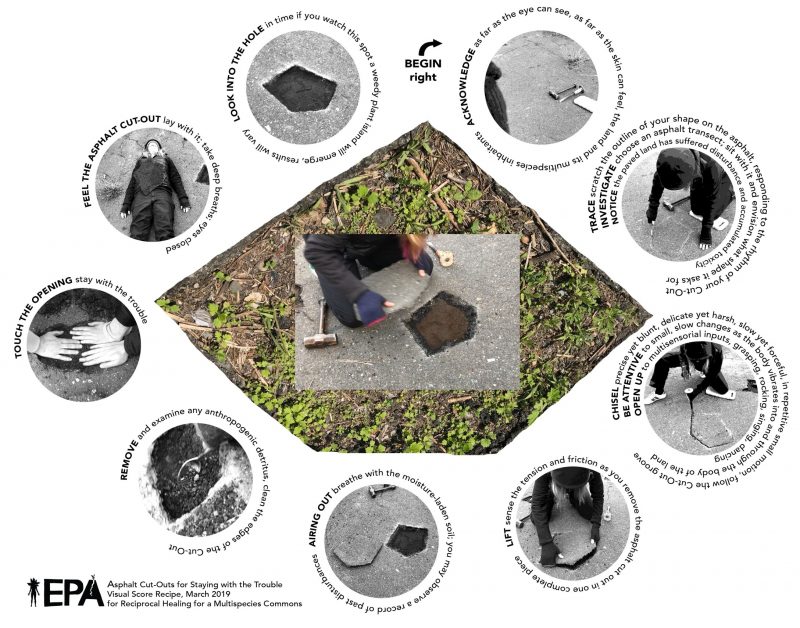
Multispecies Care Act
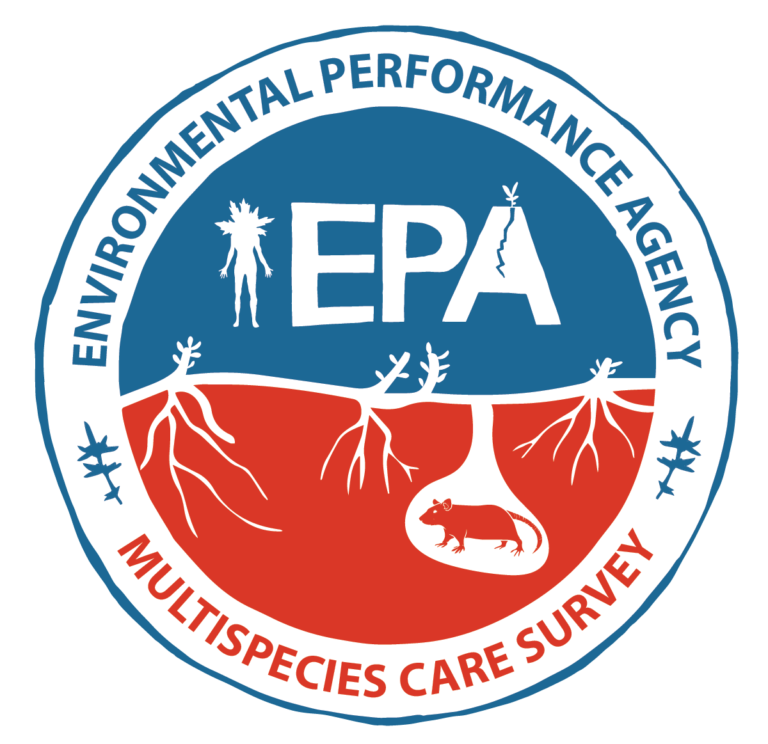
“In a time of pandemic crisis, how do we re-value what care means for all living beings?”
EPA / Multispecies Care Survey
In working towards the encouragement of new discoveries of understanding of diverse nonhuman life amidst social distancing, the EPA has created The Multispecies Care Act.
“An offer of embodied, actionable principles for centering spontaneous urban plant life as one means (among many) of contending with the failure of our environmental regulatory apparatus to deliver policy that protects and values life both human and non-human.”
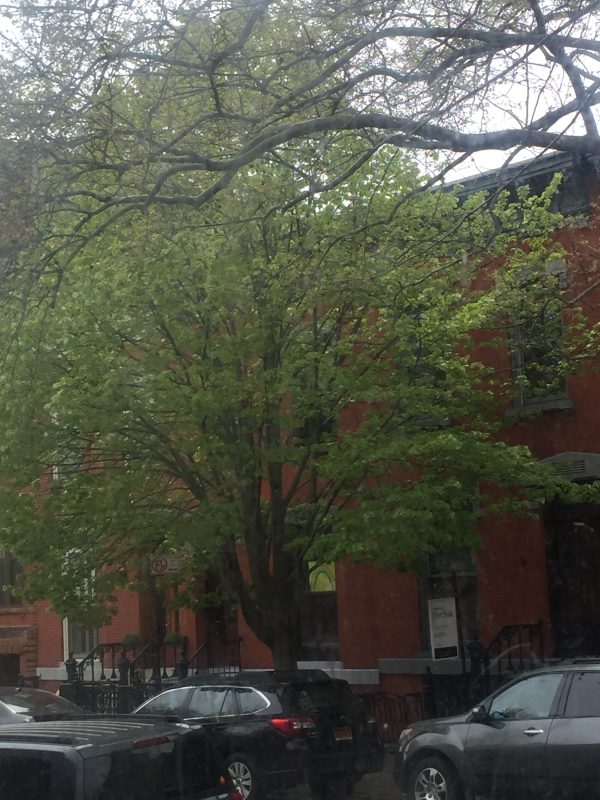
Radical Care Practices
“Your action is a seed in the Emergent Plantocene.
As you walkto the Clean-up Siteoutside
Taste the air,
Feel the temperature,
Gage the humidity
Observe the dust.
Go towards the trouble.
Look to the ground.
Find a spontaneous plant
It has come to balance a disturbance.
Take a moment to listen to the plant.
Discover the offering it brings
Take time to carefully clean the plant.
Take another moment to listen to the plant.
Receive the offering it brings.”
“Dear Neighbor,
I make it my business to take care of the urban lot with its Weedy Species.
I call my job Radical Care Sitter.
My job is to notice the daily changes of the Weedy Species and listen to what they have to tell me.
I suggest you try it out yourself. “
From Radical Caresitter
Andrea Haenggi
